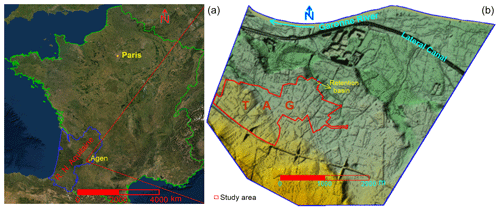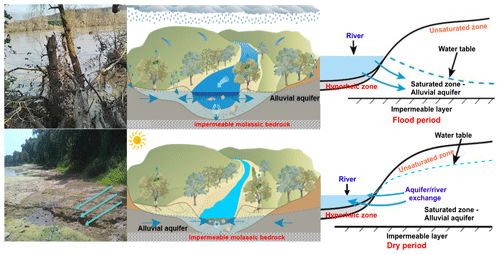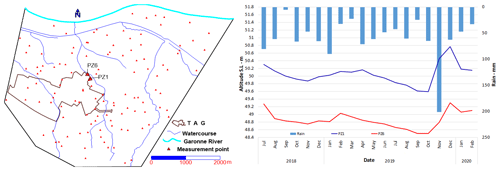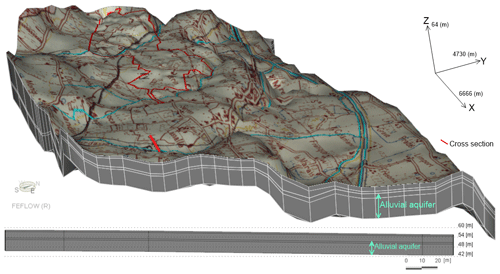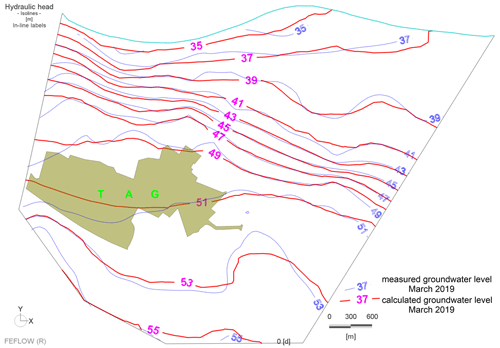Artificial Recharge of the Shallow Alluvial Aquifer as an Adaptation Strategy in the Garonne Valley, France
The Garonne River is the primary river in the southwest part of France. The Quaternary alluvial aquifer along this River may represent a substantial water resource, especially for agricultural activities well-developed in the Garonne Valley. However, this shallow aquifer hosts numerous irrigation wells reducing the baseflow during the intensive pumping periods. It is recharged by rainfall, lateral inflow from the hillside (overlying terraces), and the river bed seepage during the flood periods. The aquifer sustains the River during the dry periods. Furthermore, the potential recharge of this aquifer is particularly sensitive to annual climate fluctuation and consequently affects the ecosystems and related socio-economy. Groundwater artificial recharge can be considered an innovative and sustainable nature-based solution. The runoff water from The Techno-Pole Agen – Garonne (TAG) zone is collected in retention basins and is a potential source to recharge the shallow alluvial aquifer. The study aims to model water infiltration and understand the aquifer response and, consequently, the effects on river low flow. Within the framework of this study, 132 wells/boreholes were used in to determine the groundwater level fluctuations and to create its maps. The measurements showed that the artificial recharge increased the groundwater level by more than 1 m close to the retention basin after the rainstorm event. Similarly, a three-dimensional (3D) groundwater model shows a similar magnitude aquifer response to the induced infiltration. Consequently, this model satisfactorily represents the interest of the artificial recharge of the alluvial aquifer and permits predictions about whether the aquifer can maintain the low flow of in the Garonne River. To this end, it was estimated that the infiltrated water would take about 4 months to reach the River, which is an appropriate time to sustain it during the dry periods.





